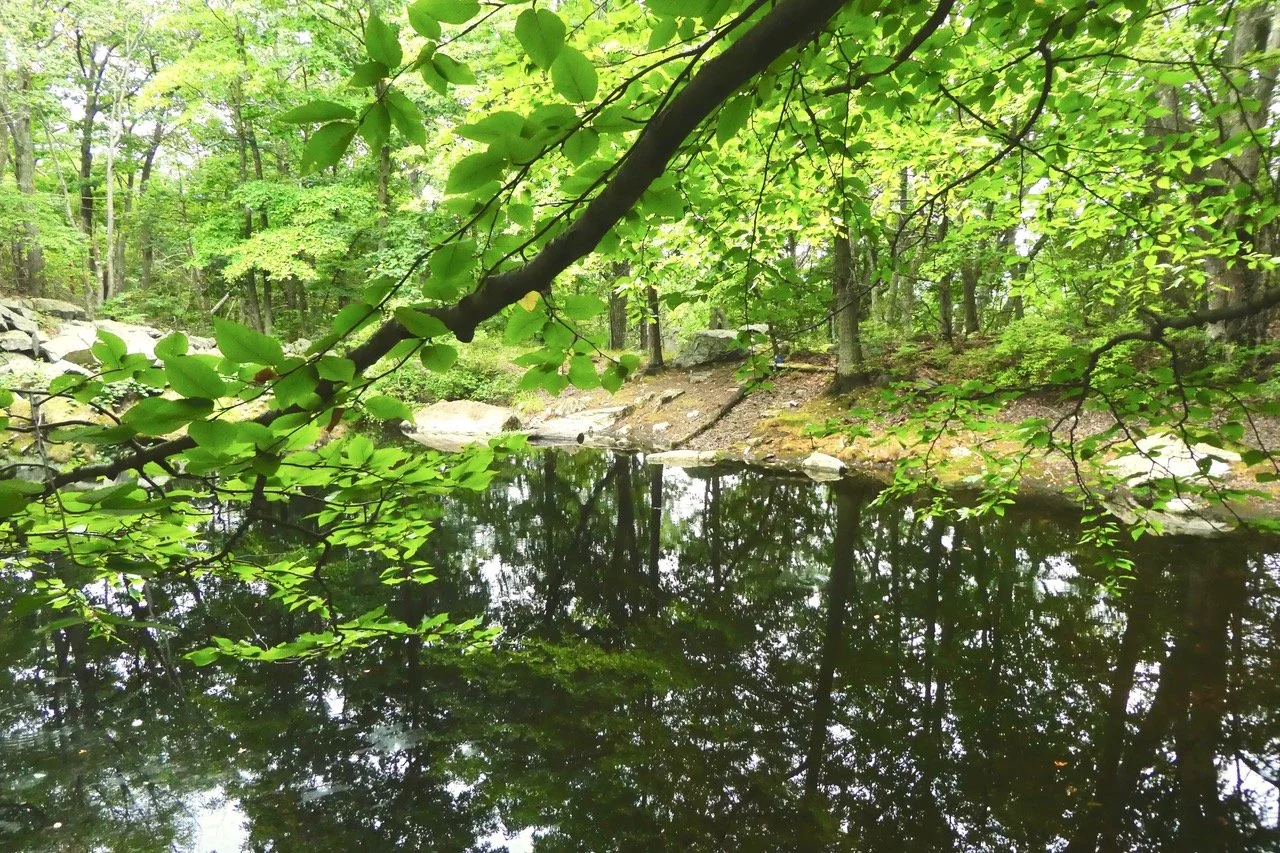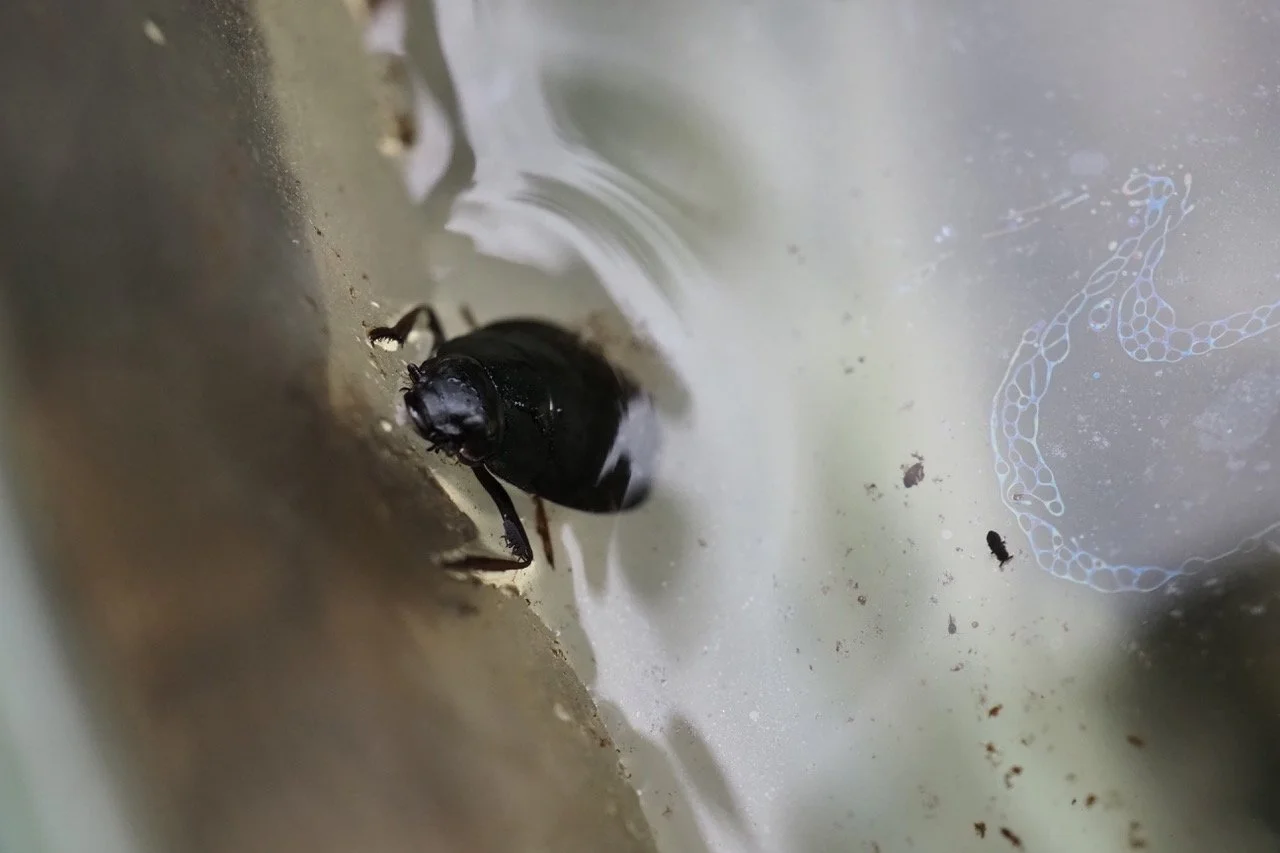ASMR Inside a Pond
By David Rothenberg, Safina Center Senior Fellow
Lost Pond through the trees. Photo by David Rothenberg
I was listening to underwater pond sounds for a few years before the British sound artist David de la Haye suggested to me that these sounds can produce an Autonomous Sensory Meridian Response, otherwise known as ASMR. “Brilliant!” I thought immediately. ASMR is a concept strangely popular among students and others who spend a lot of time online, who get transfixed by watching videos of people combing their hair for many minutes, or even many hours, or whispering soft incomprehensibilities into our headphoned ears.
The whole idea is that certain kinds of experiences listening to sounds make your brain kind of feel tingly, make it sizzle, make it happy and beautiful, and thus the exploration of these wonderful sounds suddenly has a function and is thus relevant too our purpose-bound life: why it turns out to help you sleep, relax, relieve stress, and might give you an overall sense of euphoria if not quite ecstasy. Who wouldn’t want to try that?
Why would anyone want to listen to my weird sounds? I don’t really want a reason but then again I do want you to read and listen further. The ASMR connection means that perhaps it’s all going to make you feel better to hear something tremble, something you haven't heard before, something alluring that you will want to hear more of once you open yourself up to the possibility of listening better, deeper, or more.
Water bug on the edge. Photo by David Rothenberg
This is one way to get people interested in such strange sounds that they might otherwise be afraid of. Familiarity in music does not breed contempt, familiarity keeps you excited, so this mixture of variation and repetition and what is not new: shimmering repetition—what does it take for a pond sound to be interesting? Wait in silence and then hear vibrating, the water, waiting through silence of many minutes, even hours, then the silent shriek of an unknown animal—fish, insect, amphibian! You're surprised you're interested, it becomes a hunt for something unknown and even unfindable, part of it's like that and then as it as a musician working with sound, could create the twist of the sound, the recognition, important I think for me, and for ASMR ideas, and for making the music tingle in a positive way.
So here’s what one unadulterated pond sounds like:
Anyone who uses natural sounds in music and wants to work with them believes naturalness adds something beautiful. So much time messing with the beauties of nature! Nature's perfect as it is, so why mess with it? Only if you think humanity ought to find a way to fit in. If we don’t we’re doomed, so we best listen and use from what nature’s got. As creative beings we love to tinker and transform. I take these rhythms underwater in a pond and turn them into something that others will want to participate with. And then sometimes I join in, as here with a clarinet played later over a recording made at John Allen Pond in Fahnestock State Park, Putnam County, New York:
So what does it take to make a kind of music out of a pond, and to feel a kind of trembling, excited by this different way of music, flying, thrumming thing, it is a strange noise, it is not a giant World, no great magnificent possibility like a whale song, like a bird, so it's not even like this the world of katydids all around us like a grand bug music, now everyone knows it's a secret. Secret sounds of ponds, a secret subtle world of sound I'm trying to get you to pay attention to, and I just want to massage it a little bit to get more out of it, because in the end I want you to shiver all over but I don't want you to feel it's some kind of cheap trick.
The interesting process, a tactical musical inspiration. One technique I and many others use is to sample, to take fragments of it, and repeat and repeat, play, turn into notes a sound play, at the microscopic scale this technique is called granular synthesis, breaking the already diffuse sounds into their tiniest grains, if it works I like to believe I am finishing processes nature already started, or enhancing a tendency or aesthetic already there, like Aristotle, John Cage, Anand Coomaraswamy, Brian Eno always said, that phrase that comes back in each and every one of my books, so what can I do but say it again: “Art imitates nature in its manner of operation.” Art finishes what nature began. Be like nature and you might earn yourself a place in nature—repeat that idea enough, I guess history repeats it enough, so it must have some value, it keeps coming back.


